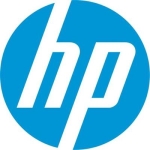What is our primary use case?
We call the solution MDATP - Microsoft Defender Advanced Persistent Threat Protection. At the same time, we're using it more from an EDR point of view, as an Endpoint Detection Response. It can detect any threats, malware, or processor, which are illegitimate and being executed by the end-users or malicious actors. When it sees this, it detects and reports to us.
Not only that, at the same time, it's detection, prevention, and response. Mostly what we were working on is detection. When I refer to detection, I mean that it can, with pinpoint accuracy, detect something and expose the threat. It can also map those threats with a MITRE, which is one of the great things that I love about it, on top of the accuracy and the threat description it provides.
There are a few different use cases. We return with a query language, which is provided by Microsoft. We are able to create some threat hunting queries. We can pinpoint, accurately detect, and run pain testing. When there’s a threat or issue, I am able to find it and track it with great accuracy in MDATP. MDATP is able to tell me that, for example, in my organization, if there was a guy who was doing pain testing, which is black listed, and if there was an attempt to exploit something or install some malicious code or try to hack into the system. I am able to find this and pinpoint its occurrence. Not only that, I’m able to map them onto a MITRE framework and tell which stage of the attack it was, where the attacker came from, et cetera. I can see if it was something that was planned in the organization.
I can both detect internally and externally. I have full faith that the MDATP will detect behaviors and warn us of issues.
What is most valuable?
When you go to do a deep-dive or investigation as a SOC analyst or any security analyst, it gives three structures or processes, as well as the execution that it performs. I am able to perform a very deep-level investigation with MDATP - more than I can with any other tool.
It did increase our security posture. While we had an antivirus before, it would only detect or prevent certain types of attacks. However, based on that capability, you cannot respond to the threat directly. For example, if there was ransomware on a system, the antivirus will be able to identify, detect, and mitigate it. However, at the same time, even if the antivirus detects that and tries to prevent it, you need to contain that machine, or you need to isolate that machine from the network. You don't want that machine to be talking to anybody in the network. Antivirus solutions can’t exactly do that.
With respect to prevention, it has an auto-remediation feature, which is a good feature that I love with respect to prevention. It does auto-remediation as well as manual remediation, which is pretty good.
With respect to response, we were able to contain, block, and respond to threats faster with MDATP. When we analyze the incidents or the threats it gives us a very good view of everything.
With this product, before containing or responding, we get the information and can see what exactly is happening and when that malicious file was installed. After that, we have an event timeline. The visibility is not that much when you only have an antivirus. Now, we see the full picture. When we adopted this tool, we got the detect, prevent, and response functionalities. Overall, our security posture looks much better and our attack surfaces are limited. Endpoints are also most vulnerable today and we can efficiently protect them now. Since we have reduced the attack surface our security posture has improved dramatically. On top of that, we have the capability to respond and to go deeper on a forensic level.
The product doesn’t affect our end-users. I do not see any major issues. There are exceptions where approvals may be necessary. However, the user acceptance is good. This is something that organizations pre-plan and there is nothing the user really has to worry about or act on.
What needs improvement?
Defender’s GUI can be optimized. The console needs to be more refined. After you have been using it for some time, you get used to it, and it is manageable. However, it should be a little bit more refined.
They should come up with pre-built inner workflows. I would really like to see this. There need to be workflows with respect to notifications, remediations, or any actions that people want to take. They should come up with predefined or prebuilt hunting capabilities. Right now, we have to manually write queries. I would prefer if they could come up with something more automated.
This is with respect to a SOC analyst perspective. Other users, other administrators, other different roles might have different issues. For me, there are no major concerns. It is a good tool, out of the box.
For how long have I used the solution?
I've used the solution for about a year and a half, and have also done training on it.
What do I think about the stability of the solution?
The stability is good. It's a stable platform. I don't see any issues right now. However, I did see something in the past. I can't quite remember the exact situation. It's resolved and right now there are no issues.
What do I think about the scalability of the solution?
The solution is highly scalable.
You can onboard as many end systems as you want. If you bring more, for example, 100 users or 100 endpoints, you can integrate them with no issue. It's not a problem with MDATP.
We have somewhere around 2,000 to 3,000 users who are using it. We have an endpoint team and they manage the antiviruses and security tools and all those things. We manage the product partially from a policies perspective, and the endpoint team manages the platform and maintenance of it, including any upgrades, as necessary.
How are customer service and support?
I've dealt with technical support in the past. It's good, not excellent. That said, it's okay.
Which solution did I use previously and why did I switch?
Before using this solution, the company mostly dealt with antivirus solutions.
We moved to this solution to strengthen and report, detect and prevent, et cetera, which antivirus solutions don't offer. We wanted forensics and capabilities that were missing. Antiviruses simply cannot protect you from advanced persistent threats, and they cannot protect you from ransomware and they don't respond to things faster. Response capabilities were something that was missing. Basically, we just needed more.
How was the initial setup?
I'm usually not part of the entire setup, however, I do manage it. We have to do certain policies within our organization. However, from what I've seen, it's not a complex setup. It is pretty straightforward.
In terms of how long the deployment takes, I don't remember the length of time. If you have a CCM centralized, you can push the policies within hours.
What's my experience with pricing, setup cost, and licensing?
The licensing is something that management decides on. I don't deal with the pricing or licensing.
Which other solutions did I evaluate?
We didn't really evaluate other options. We provided support for one of our clients, and it was a decision they made.
What other advice do I have?
We're a consulting company. We are not partners with Microsoft.
We use the solution as a SaaS.
I'd advise other companies to use this solution. It's an ideal choice, however, I'm not sure about the pricing. Maybe it's on the higher end of other competitors' pricing. That said, if you have an opportunity to use it, it will solve a lot of problems with respect to pain point detecting and doing investigations. At the same time, with Microsoft, if 80% of your organization is using Windows systems, it's going to be compatible. Specifically, with its platform, Microsoft understands what is right and what is wrong. Therefore, if the money is not a concern, or the budget is not a concern, opt for this. At the same time, as a generic statement, if not this solution, go for an EDR tool that suits your organization's needs best.
I'd rate the solution at a seven out of ten simply due to the fact that I have not fully optimized it.
Disclosure: My company does not have a business relationship with this vendor other than being a customer.












